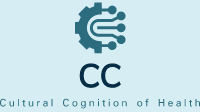One of the aims of the CCP’s Vaccine Risk Perceptions and Ad Hoc Risk Communication study was to assess the general public’s impressions of the safety and efficacy of childhood immunization. The Study found that the public—including all manner of diverse subcommunities—holds overwhelmingly positive views of the contribution that public vaccines make to public health.
The Study measured these attitudes by administering a survey to a large, nationally represenative sample of U.S. adults.
By overwhelming margins, the survey subjects indicated that they viewed vaccine risks as low and their benefits as high. This sentiment was reflected across all manner of survey items, from ones relating to the contribution that vaccines make to protecting children and the public generally from disease to the link between childhood vaccinations and specific diseases to trust in members of the public health establishment responsible for testing vaccines.
Indeed, the study results suggest that public vaccine-risk perceptions fit the profile associated with a dynamic known as the “affect heuristic.” Signified by a uinform and intense negative correlation between all perceived risks and all perceived benefits, the “affect heuristic” refers to the tendency of people to form generic pro- or con-attitudes that shape their understanding of all more specific issues, and indeed their assessments of information relating to a putatitive risk source (Slovic, Peters, Finucane & MacGregor 2005; Loewenstein, Weber, Hsee & Welch 2001)
The study results suggest that the vast majority of the U.S. public—upwards of 75%—hold an extremely poisitive affective orientation toward vaccines.
Moreover, the study found that this orientation characterizes the outlooks of diverse subgroups, including ones that are divided on many other societal risks that provoke poilarizing affective responses. There were thus no meaningful differences associated with political outlooks, cultural worldviews, religiosity, or comprehension of science generally.
These results are good news. They imply that the contribution that vaccines make to public health is currently free of the dynamics that make issues such as climate change and evolution persistent matters of cultural division (Kahan 2010, 2013).
An important objective of vaccine-risk communication should be to protect this state. Influences that that could disrupt it, including empirically uninformed styles of risk communication, were explored in the experimental component of the study.
The Study also addresses what the role of the affect heuristic and the absence of significant variance in public opinion imply about methods of empirical anslysis that should be used to study vaccine risk perceptions. One important implication is that it is a mistake for reserarchers to treat general survey items as a source of guidance for identifying the small portion of the population that does in fact hold negative views of vaccines. Instead they should used more targetted methods that have been validated as predictors of vaccine behavior.
References
Kahan, D.M. A risky science communication environment for vaccines. Science 342, 53-54 (2013).
Kahan, D. Fixing the communications failure. Nature 463, 296-297 (2010).
Slovic, P., Peters, E., Finucane, M.L. & MacGregor, D.G. Affect, Risk, and Decision Making. Health Psychology 24, S35-S40 (2005).
Loewenstein, G.F., Weber, E.U., Hsee, C.K. & Welch, N. Risk as feelings. Psychological Bulletin 127, 267-287 (2001).
To return to the main page for this CCP Project, click here.
To download Vaccine Risk Perceptions and Ad Hoc Risk Communication: An Empirical Assessment, click here.
